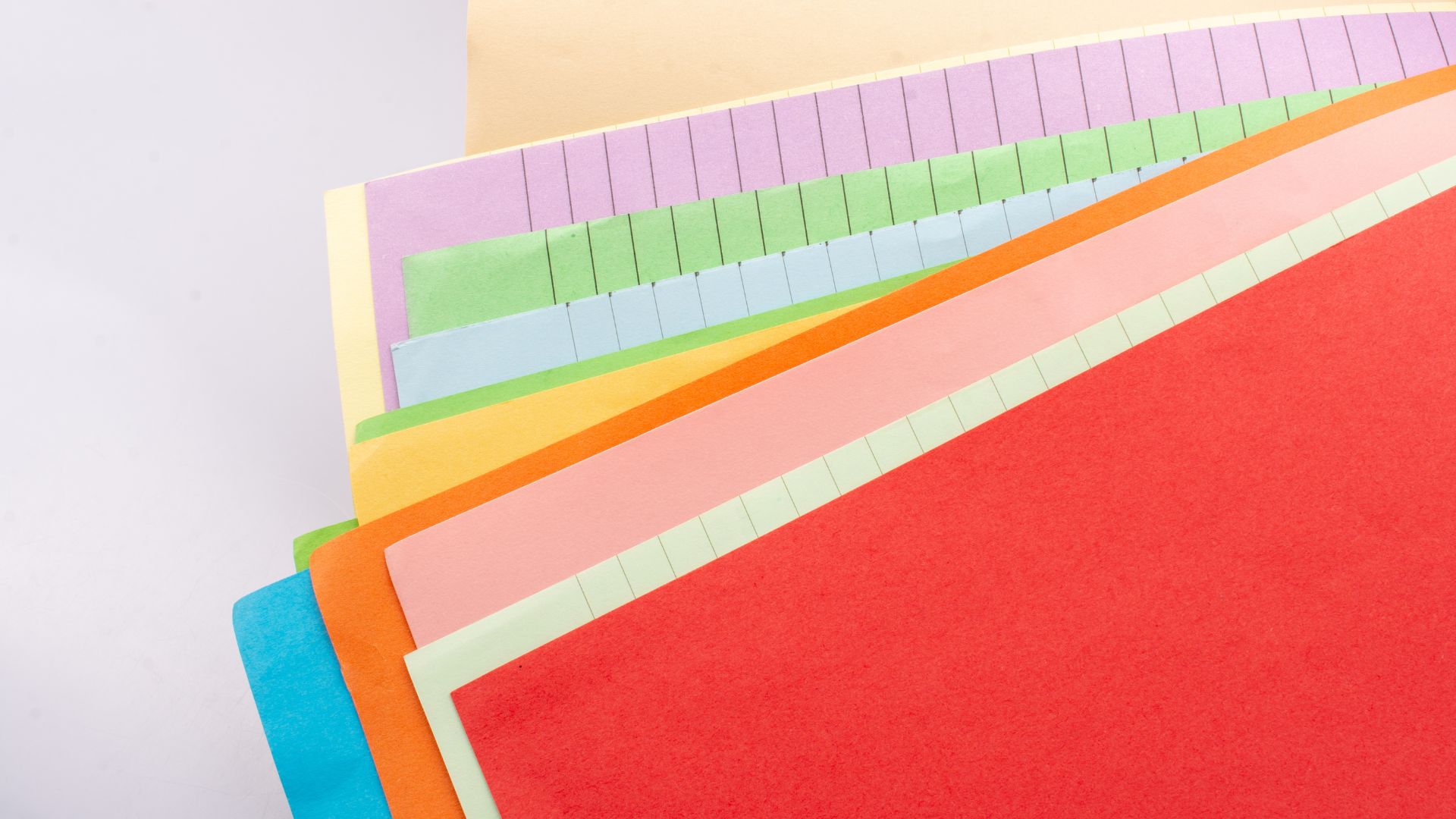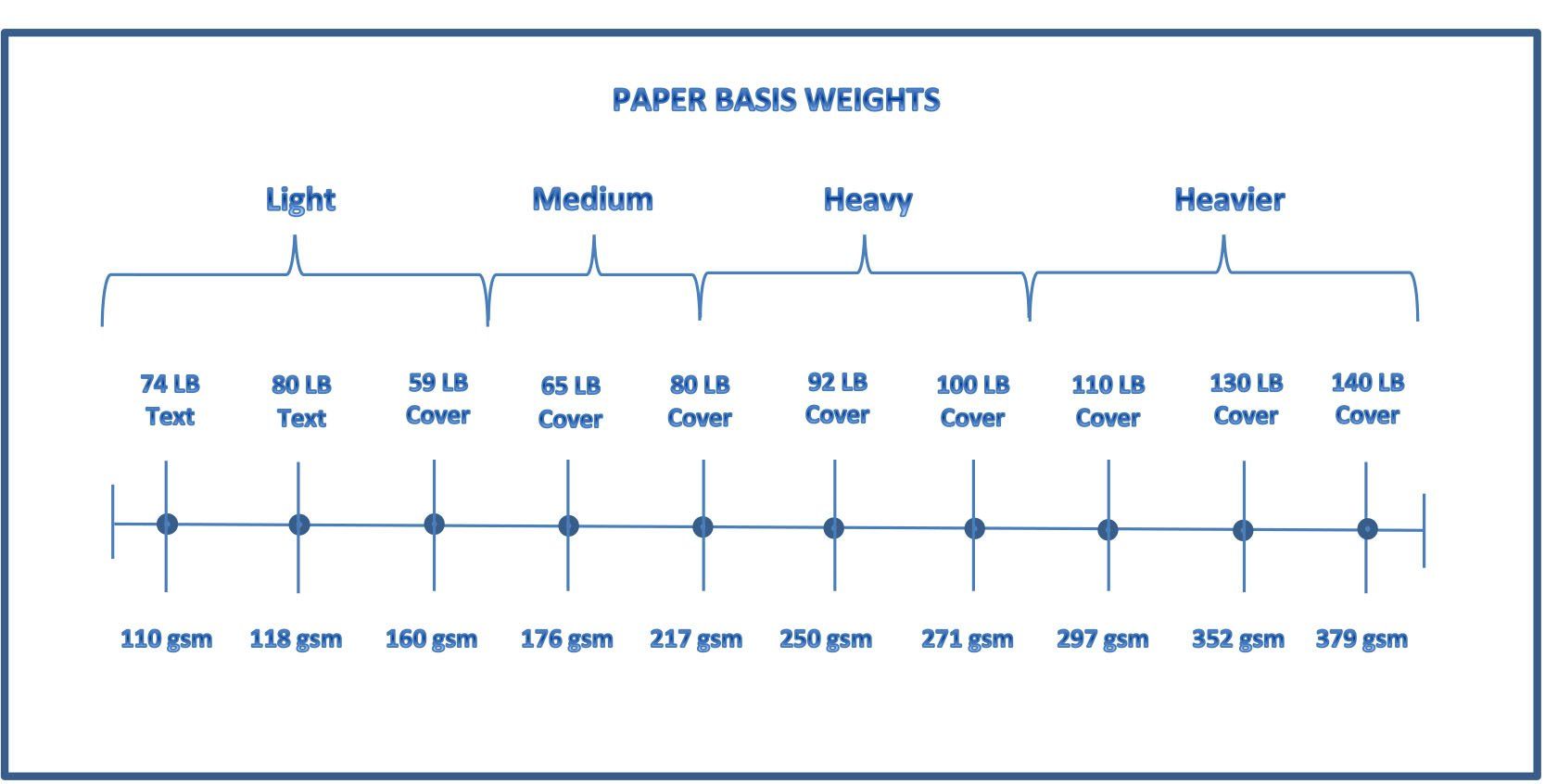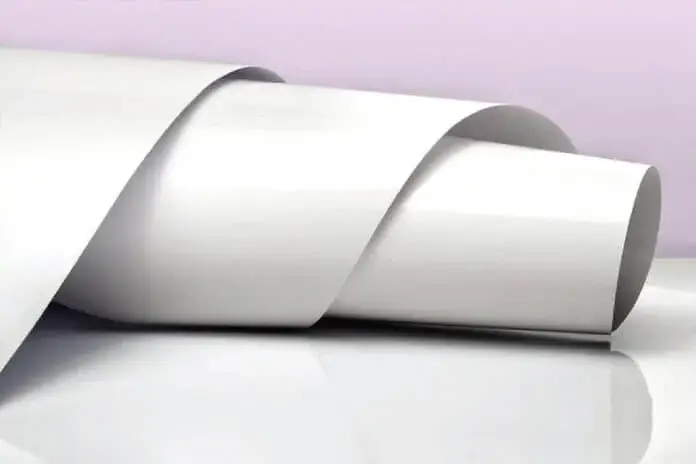The weight of paper is one of the primary considerations when you want to conduct printing projects. It can be confusing for some people, especially those who are unfamiliar with the printing industry. Hence, you should know various paper types and common paper weights to use.
What Does The Weight of Paper Mean?

Weight of paper is a term to address the thicknesses or calipers of paper in the printing industry. Paper weight does not denote the individual sheet of cut paper but you can determine it by the quantity of a ream consisting of uncut paper weighs.People also refer to a paperweight as a basis weight because it measures every 500 sheets in the category. For instance, if a standard sheet containing 500 sheets weighs 100 lbs, it means the paper weight of this paper type is around 100 lb. What you need to remember is each paper category has a unique paperweight.
Using a micrometer is one of the methods you can use to measure the paperweight. This measuring device can help you determine the thickness or point size of every sheet.
Why Does the Weight of Paper Important?
Each paperweight works best for specific applications. Knowing the ideal paper weight can help you to choose the most suitable option based on its type and purpose. For instance, to make a business card you need thicker and stiffer paper to ensure it is more durable than other paper because it contains crucial information.
Meanwhile, you will require lighter paper for making flyers because they are only for temporary use. The flyers usually announce events or advertise things so everyone gets it can receive the information. After reading the information on it, people usually will forget or throw them.
Based on its applications, you should think about the weight of paper wisely before making any projects or products. It will ensure you make the projects as efficient as possible and do not waste your money on something that will only be for temporary use.
What Are Paper Weight Measurements?

There are several measuring units that people commonly use to indicate the weight or thickness of a paper. These measuring units are not interchangeable and offer a different way of measuring paper thicknesses. Do not be surprised because each country may use a different measuring unit from others.
· GSM
GSM is a term coming from grams per square meter. It shows the exact measurement of the thickness or heaviness of a paper. You can use GSM to measure all paper types and it promotes easier comparison between different paper types.
This standard unit measures a sample sheet cut to a square meter in size regardless of the width or length of the paper will be. It always takes the weight measurement from the square meter sheet. For instance, paper weighing 50 gsm is much thinner and lighter than one weighing 400 gsm.
However, 50 gsm paper does not have a similar weight of paper if you turn it into a poster size or letter size. Yet, both still belong to the 50 gsm paper because that number determines a certain thickness of a sheet.
· Pounds
Pounds is also a unit to address how much the paperweight is. The higher the weight means thicker paper. Paperweights you can find in the market now range from 20 to 40 pounds depending on the material type used to make the paper.
Each paper also has a different weight like a nice bond paper whose weights range from 20 to 80 pounds while a card stock is heavier because it weighs around 50 to 140 pounds. Normally, 500 sheets of paper compose a ream, and paper weight measurement occurs before you divide the paper into smaller sizes.
· Points
Unlike the pounds, points measure the thickness instead of the weight of paper as they do not always relate directly to each other. Determining paper thicknesses with points is slightly more scientific because it has a standard measurement.
It involves an instrument to examine paper thicknesses up to 1/1000 of an inch. The higher the point’s value means the thicker the paper is. However, it does not give a significant comparison from numbers to numbers because you can notice the difference in the final printed product.
· Other Measurements
You may discover less common measurement units than gsm, pounds, and points but now becomes more frequent in the printing industry.
Another measurement term you may find is boards and some address it as board weight. It denotes a particular weight of paper like cardboard or a heavy board for softcover books or business cards.
What are The Differences between Text and Cover Stock?
The terms of text and cover stock appear to identify how people use the paper. A text or an offset stock which is commonly measured in pounds is often for internal pages. Meanwhile, cover stock measured in points is more frequent for cover pages.
Remember that it is not the exact rule in using paper because people can use both interchangeably. The significant difference between them is the thickness. A text is thinner and less rigid than a cover stock. It is essential to consider the paper type and numerical weights when choosing the weight of paper.
You should consider several essential categories like stock, purpose, and weight. Below are examples of paper weight differences between text and cover stocks.
· Coated Stocks

The characteristic of coated stocks is it combines gloss and silk coated. Gloss and silk-coated covers usually have regular weights ranging from 80 to 130 pounds while the text is between 80 and 100 pounds. The coated stock uses vary from postcards, pocket folders, displays, and packaging.
· Uncoated Stocks
You can find multiple uncoated papers which vary from light and commodity to heavy and opaque. The weight of paper can be 65 to 130 pounds for cover stocks and 40 to 130 pounds for the text.
It includes different finishes like linen, laid, or felted and people likely use it for invitations, booklets, brochures, and flyers.
What Is the Most Common Available Paper Weight?
You can discover multiple regular paperweights for various uses. People usually divide paper uses into three types which are cover paper, text paper, and card stock. Each type has different popularly used paper weights as follows:
· Common Weights for Cover Paper
- 100lb or 10-point cover is the lightest available weight for cover paper. That is one of the reasons behind this paperweight is ideal for catalog covers or other smaller perfect-bound products such as a handbook.
- 110lb or 12-point cover is a more famous weight of paper to create a cover. People usually use this type for graphic novels, paperbacks, and other massive perfect-bound products.
- 130lb or 16-point cover is a heavier option that matches any project with heavier covers. You can find this cover type on trade paperbacks, catalogs, and oversized perfect-bound products.
· Common Weights for Text Paper
- 50-pound text is the lightest weight of paper available and roughly similar to a computer paper or standard copy. People commonly use this text paper type for workbooks, novels, and most documents.
- 70-pound text offers a cheaper and lighter option if you want to create large catalogs and comic books. This type is famous for its gloss or matte finish.
- 80-pound text is the most common weight of paper people use for making small catalogs and magazines. People also use it occasionally for internal pages of hardcover books or booklets.
- 100-pound text is the most versatile option in this category because you can use it for cover and text. You can discover it on the internal pages of art books and children's books. It is fairly light to support saddle stitching but strong enough to serve as a cover
· Common Weights for Card Stock
- The 65-pound card offers the lighter option for the weight of paper and is ideal for various uses like postcards, business cards, greeting cards, tickets, and posters.
- The 80-pound card has similar applications to the previous ones if people need a heavier option. Besides, it covers more uses like invitations, table tents, and folders.
How to Choose the Best Paper Weight?

After knowing how to measure and identify the paperweights, it will be beneficial if you know how to choose the most suitable paper weight for your projects. Here are the common factors you can consider to select the best weight of paper.
1. Individual needs
Individual needs are one of the primary factors to deliberate because each person has different purposes for creating their printing project. You can find many suggestions regarding what paper type suits the best with your printing needs.
However, you always have a personal decision towards multiple options available. You only need to rethink what you want to achieve with the projects.
2. Early paper weight consideration
Considering the weight of paper in the early phase of the printing process is worth trying. You can decide the most suitable paperweight together with the type, sizes, and number of pages required. People usually consider those factors at the beginning of performing printing projects.
3. The cover type
Another factor that you should think about regarding the paperweight is the cover type. It is advisable to use two unlikely paperweights for different purposes, one for the cover and another for the inside pages. For instance, heavier paper is more suitable to make as a cover for a perfect-bound or saddle-stitched project.
Meanwhile, lighter paper works well for printed text due to its readability and affordability. It allows the reader to flip the pages when reading the book. This paper is also suitable for other binding projects like magazines, booklets, and catalogs.
How Do You Use a Paper Weight?

Several tips help you to think about paperweight applications. You can deliberate several factors to optimize the use of paper weight. If you can use the right paper weight, you can deliver the printing purposes successfully.
1. Identify the target market
The quantity of products that you will produce affects your choice of the weight of paper. A lighter paper is a smart option if you want to make large quantities or mail mass products because it helps in reducing the mailing costs in shipping.
Meanwhile, heavier and more sophisticated paper fits more on custom-made or high-quality printed products like invitations or personal notebooks where quality is the top priority.
2. Select suitable formats and finishes
It is advisable to think about the formatting and finishing because they affect your choice of paper weight. Determine how you will work on the paper because folding, cutting, and stitching can be more challenging on heavier paper. Never forget to think about the paper finish too.
Coatings can add quality and luxury to the paper's appearance and protect it from damage. Some coatings even make the work a little tricky because they may contain layers that make it more slippery. Therefore, choose paper formats and finishes that can support your projects.
3. Don’t forget about the look
Another crucial thing about the weight of paper you should not miss is its appearance. Customers or users can perceive the paper's quality directly by looking at its appearance. The heavier it is, the more likely people are to think that the product uses high-quality paper.
Using the most suitable weight of paper allows you to create more impressive, durable, and higher-quality printing projects. It is why you need to understand popular paperweight terms fully. Besides, learn how to measure and use them because they will determine your projects’ prices.

Morgan Azhari, the owner of PrinterUpdate.net, is a dedicated expert in the field of printers, leveraging a wealth of experience and education to create a platform that passionately shares insights and solutions.
With a goal to enhance the printer user experience, my vision for the website is to provide valuable content, making a positive impact on individuals navigating the complexities of printers.